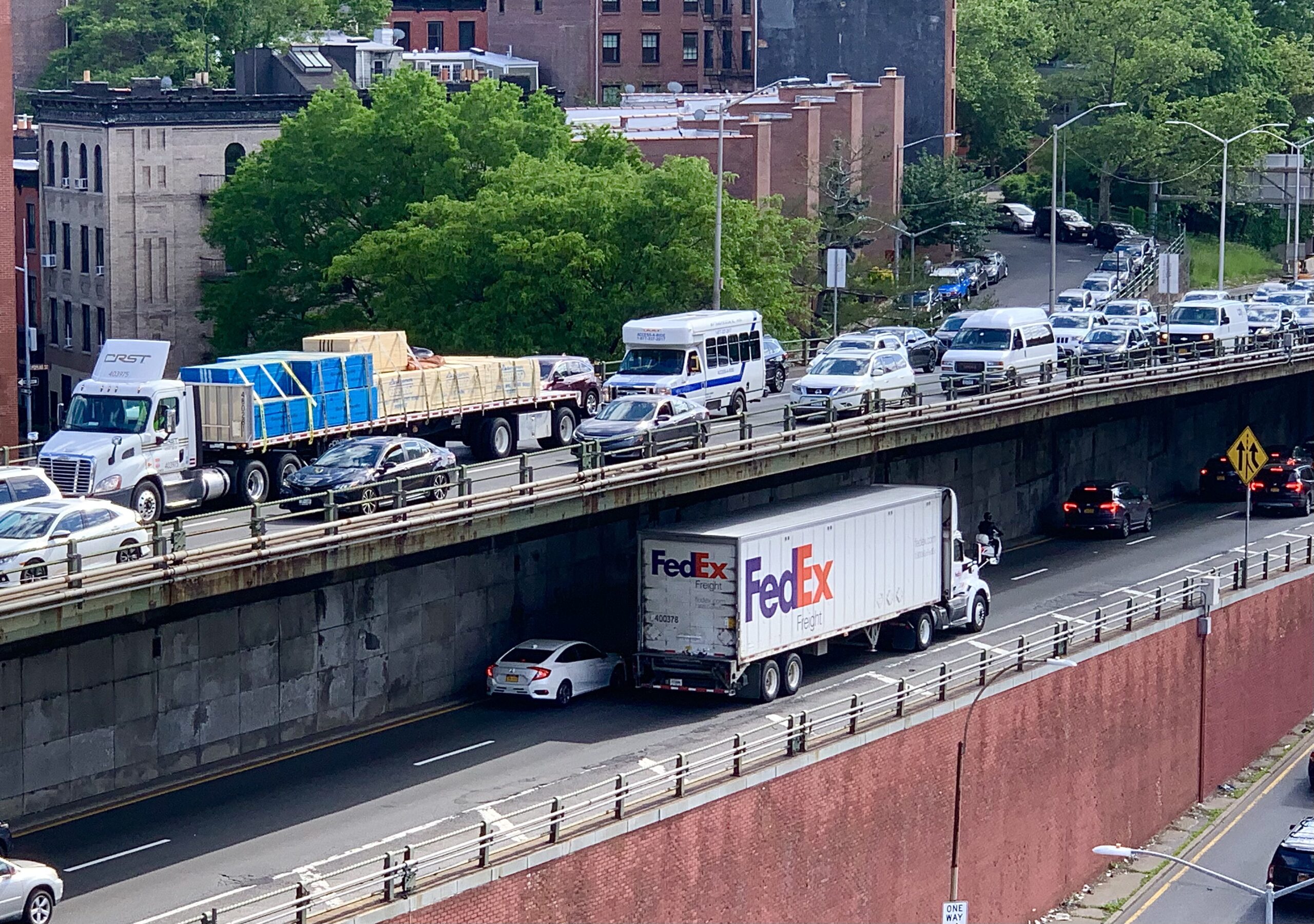Brooklyn officials urge Buttigieg to narrow BQE to 4 lanes

More than a dozen Brooklyn officials representing neighborhoods along the Brooklyn-Queens Expressway sent a letter on Tuesday to U.S. Department of Transportation Secretary Pete Buttigieg, urging him to limit the planned reconstruction of the BQE to four traffic lanes (two in each direction).
New York City’s Department of Transportation, which has responsibility for the crumbling 1.5-mile-long BQE Central portion (which includes the Triple Cantilever underpinning the Brooklyn Heights Promenade), has not been clear about whether it plans to replace this portion of the highway with four traffic lanes or the original six constructed by Robert Moses in 1954.
“We are writing to urge the USDOT to support maintaining the highway at two lanes of car and truck vehicular traffic in each direction. Widening highways in public-transit rich New York City is in direct conflict with our shared public health, safety, and climate goals,” the officials wrote.

Brooklyn Boro
View MoreNew York City’s most populous borough, Brooklyn, is home to nearly 2.6 million residents. If Brooklyn were an independent city it would be the fourth largest city in the United States. While Brooklyn has become the epitome of ‘cool and hip’ in recent years, for those that were born here, raised families here and improved communities over the years, Brooklyn has never been ‘uncool’.